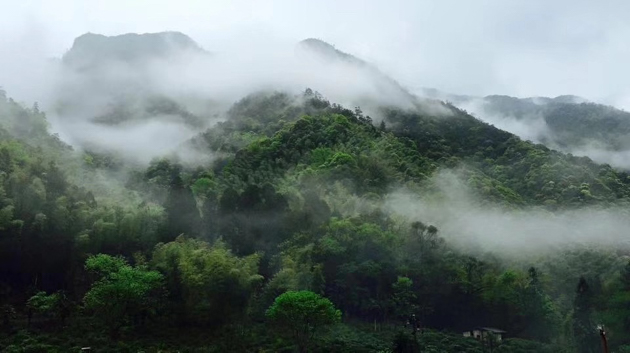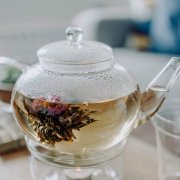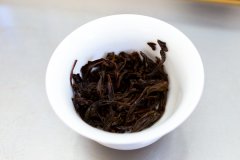What are the characteristics of good tea after brewing? Where is the production place of alpine tea in China?
If you are an experienced tea drinker, you will certainly question what determines the price of tea during your tea trip. If you are entering the vast world of tea, the problem may only just begin. In today's blog post, we will discuss the five signs of tea quality, which in turn may determine the price of tea.
Five signs of tea quality
1: variety. Cultivated varieties are different tea varieties planted by farmers. For centuries, farmers have cherished certain varieties. After years of experiments, farmers may find it the best choice for tea production and insist on using it. Some creative tea farmers like to go further, cultivate their tea trees and provide a new and unique experience for tea drinkers. Many tea lovers know their varieties and will choose to buy tea according to this knowledge. Read more about Japanese varieties.
2: high altitude. This is the opportunity for Gaoshan tea to give full play to its talents. There are many reasons why tea growing at higher elevations is so popular. One of the reasons is that Gaoshan tea can withstand the worst environment. The temperature is unstable, often from high temperature during the day to low temperature at night.
The mountains of China, Japan and Taiwan are often shrouded in thick fog, and sometimes the sun is rarely seen. This process is similar to shady tea. Tea trees must work hard to accumulate nutrients in order to survive in a harsh environment. In addition, all the sugar is pouring into the tea. Therefore, alpine tea has a sweet taste and very soft leaves.
On the other hand, much smaller insects live at high elevations. Therefore, pesticides are not needed to protect crops. As a result, Gaoshan tea is often organic, even without certification.
Not to mention the hard work of picking tea by hand from the hillside! No machine can sail easily on those foggy peaks. Read more.

3: material. It is similar to the concept of growing tea at high elevations. Shading tea trees ensures that they get the least amount of sunlight, thus producing high-quality tea. Direct sunlight will make the tea very bitter. For example, most cheap black tea, such as Indian black tea, is grown in direct sunlight and low elevations. In just a few seconds, you'll get a dark, bitter liquid, preferably with plenty of sugar and cream. On the other hand, Chinese black tea is mellow and sweet, sometimes with the taste of herbs and fruits. They certainly don't need any additives.
In tea terminology, shaded tea helps maintain the content of l-theanine (responsible for sweetness and delicacy, to name a few). On the contrary, sunlight kills theanine and increases catechin (which causes bitterness). Shading is the most common in Japanese tea gardens.
4: picking. Early spring harvest is usually considered to be the best. This is the time when tea farmers can pick the tender and mildest tea buds and leaves. These tea buds store the best taste in the severe winter weather. With the passage of the harvest season, the weather gets warmer, and the tea gradually becomes rougher and bitterer.
Although many people think that early spring tea is the best, you may also encounter some delicious summer and autumn teas, so there is no need to ignore them completely. In addition, many tea farmers choose a mixed harvest to create a stable tea that is well balanced and supplied throughout the year. This is reflected not only in the harvest season, but also in other factors, such as whether farmers shade tea.
5: choose style. Tea fans always attach the most importance to hand-picked tea. Naturally, when picking tea by hand, farmers are very gentle with tea and always choose the best tea.
Important Notice :
前街咖啡 FrontStreet Coffee has moved to new addredd:
FrontStreet Coffee Address: 315,Donghua East Road,GuangZhou
Tel:020 38364473
- Prev

How many years of history is the origin of Chinese tea? tea mainly goes through those three development processes.
According to the records of the Huayang Kingdom, when the emperor Wu Zhou conquered the Shang Dynasty around 1057 BC, tea entered the Central Plains and spread as a tribute to the southwest. Due to the inconvenient transportation at that time, the southwest was far away from the Central Plains, and when the tribute tea arrived in the capital, the tea was not fresh, so people had to process the tea to make dry tea. So, what are these dried teas for? Food
- Next

What are the best varieties of Gaoshan tea in China? what are the top ten famous teas? what is the most fragrant, smooth and delicious tea?
When we talk about taste, what are we talking about? Of course, when you read the tea description and choose the tea that best suits your taste, you may notice the so-called taste. Of course, taste is an important part of tasting and understanding every kind of tea. Even coffee, alcoholic beverages and food! Of course, if you are tasting something, it is impossible to get rid of the taste. However, among us,
Related
- Beginners will see the "Coffee pull flower" guide!
- What is the difference between ice blog purified milk and ordinary milk coffee?
- Why is the Philippines the largest producer of crops in Liberia?
- For coffee extraction, should the fine powder be retained?
- How does extracted espresso fill pressed powder? How much strength does it take to press the powder?
- How to make jasmine cold extract coffee? Is the jasmine + latte good?
- Will this little toy really make the coffee taste better? How does Lily Drip affect coffee extraction?
- Will the action of slapping the filter cup also affect coffee extraction?
- What's the difference between powder-to-water ratio and powder-to-liquid ratio?
- What is the Ethiopian local species? What does it have to do with Heirloom native species?

